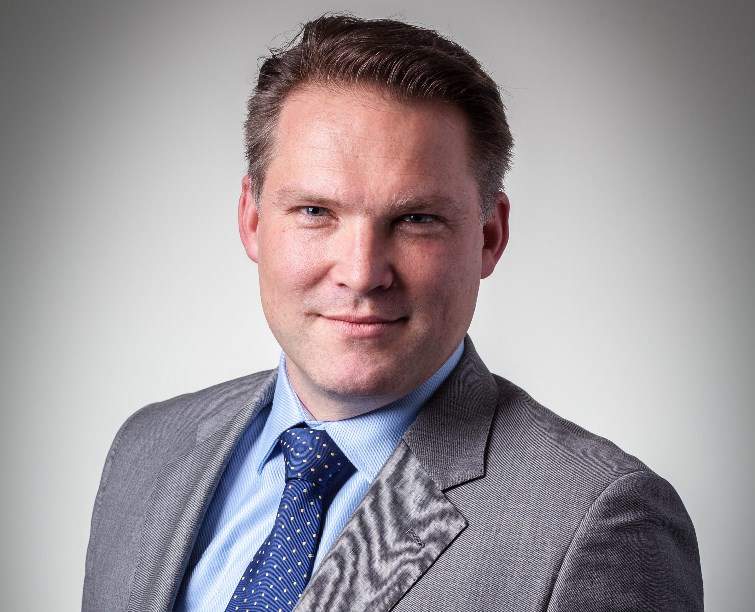
After nearly a decade working at Moneybarn, Shamus Hodgson was named the subprime lender’s managing director towards the end of 2016. Jonathan Minter spoke with Hodgson to find out how he has been settling into the role, and what challenges and opportunities lie in wait for the business
A lot has changed at Moneybarn since Shamus Hodgson first joined what was then called Duncton, in 2008.
For a start, the company has changed its name, been acquired by new owners, and moved offices. Under the management team led by Peter Minter until the end of 2016 the company grew out of the financial recession to become one of the biggest lenders in the subprime market.
During this time, the industry as a whole has changed dramatically. The introduction of the Financial Conduct Authority (FCA) changed the regulatory landscape, forcing companies to increase their focus on compliance and really look at how they treat their customers.
Despite the increased costs associated with this, the industry has gone from strength to strength over recent years, to the point that today over 80% of new cars bought are purchased using finance. Although the penetration rate remains lower in the used car space – Moneybarn’s target market – this area has seen comparable growth.
Reflecting on the new size of the industry, Hodgson notes that motor finance has a higher profile today than it has done at any time since the crisis in the last decade. “It’s out there in the general press at the moment, and I think it’s an interesting time for the overall market,” he adds.
How well do you really know your competitors?
Access the most comprehensive Company Profiles on the market, powered by GlobalData. Save hours of research. Gain competitive edge.

Thank you!
Your download email will arrive shortly
Not ready to buy yet? Download a free sample
We are confident about the unique quality of our Company Profiles. However, we want you to make the most beneficial decision for your business, so we offer a free sample that you can download by submitting the below form
By GlobalDataThere are a number of reasons he suggests the industry has gained this higher profile. The sheer size of the industry is one of these, as well as the importance of the industry to the everyday lives of a large section of the population.
Brexit has also caused some of the spotlight to be shined on the motor finance industry. Hodgson says: “It’s led on to conversations in the market and in the press about manufacturers, most of whom are based in Europe or the US, and the motor finance market in the UK. I think there is a lot of noise going on in the background, and most of that will be unresolved because no one quite knows what the future will bring.”
Putting this to one side, Hodgson says the industry is generally in a good space right now: “All parts of the industry – from dealers to brokers to lenders – have worked very hard to get their houses in order to make sure they are as effective and efficient as they can be from a regulatory and commercial perspective.
“There is a huge focus on good customer outcomes at the moment, more so than any other time in the nine years I’ve been in the industry.”
Subprime
In the subprime space specifically, Hodgson argues the niche is going through a continued journey to close the gap, from a customer experience and operational perspective, between itself and the prime market.
Traditionally, Hodgson says the market has been viewed as being split between prime and subprime, with the two offering different products and experiences for customers. However as time has progressed, the situation has become much more of a continuum as far as customer experience is concerned, with technological and service advancements that would have historically been features of the prime market being driven into the subprime space. An example is electronic identification (E-ID) and e-signing, which Hodgson says would have traditionally been a feature of the prime market, but is now also starting to evolve into the subprime space.
As well as subprime lenders looking up to the prime market to help improve their customer experience, the more heavily regulated environment in which the industry now operates has pushed prime lenders to look at some of the facets of the subprime market.
Hodgson explains: “Looking back a few years, the prime customer would not have involved conversations around income and expenditure, whereas with Moneybarn it’s always been a feature of our onboarding process. It is now a feature in the prime market as well.”
That said, a subprime and a prime lender are unlikely to ever end up with the same customer experience, he says. One key difference is the customers themselves. “The risk profile is different, the customer history is different, and sometimes that will need to be reflected in the customer experience,” Hodgson says.
The fact Moneybarn and its competitors are dealing with customers who have had historical issues that might mean they are, on a portfolio basis, a higher risk, means it makes sense that they would have some additional checks and balances and processes in place.
Instead, the industry is going through a slight rebalancing, with different sections of the market learning from one another, but needing to be mindful that the different risk profile of the customers means there will always be a slight differential in terms of the process.
The most obvious example of this is from a product perspective, where there remains a large difference. PCP remains a product exclusive to those lending further up the credit scale, with the product not offered in the subprime space.
From a market size perspective, Hodgson acknowledges that, to an extent, the subprime market is defined by what prime lenders will not do, and this tends to be cyclical.
With a few unknowns currently on the horizon for the industry, he says he would anticipate the non-standard market growing in its scope and volume in the future because of some concerns in the prime space and some risk contraction from the prime lenders. As a result, Hodgson predicts: “I can see the non-standard market increasing as we move through 2017 into 2018.”
That said, he admits: “I’m not sure if that’s happening at the moment, but it’s something I could see happening in the future.”
When it comes to regulation, Hodgson is bullish not just about Moneybarn, but the wider subprime’s response to the FCA. “There are a relatively small amount of lenders in the subprime market now, and I think we are a group of companies which have focused on doing the right thing by our customers, because that’s the way we are commercially successful.”
Moneybarn
Describing his promotion to managing director at Moneybarn, Hodgson emphasises his initial plans to be more about evolution than revolution.
“I’ve been with Moneybarn for nine years now. I’ve been part of the journey of growth, and acquisition by Provident. We have a hugely successful business that has grown rapidly over the past four or five years, and we’ll look to continue to do that.”
He adds that he has taken over the role at what he views as a particularly exciting time for the industry, and specifically for Moneybarn. “The direction of travel has been really positive over the past few years, not just in terms of growth and profit, and these commercial indicators, but in terms of how we’re supporting our customers.”
Traditionally, Hodgson says the company has been relatively conservative in terms of risk appetite, which he does not see changing in the near future.
That said, the company will not rest on its laurels, and Hodgson says it is looking at how technology can improve its offerings. The aforementioned E-ID and e-signature systems, for example, were both brought in at the end of 2016, and are being refined.
Looking ahead, he says: “We’re looking at how we can use technology to help customers go through the affordability assessment in a more customer-focused and precise way. That will help our customers as well as our broker partners.”
Customer communication is another area in which Moneybarn is looking to increase its expertise, in order to make sure the lender continues to communicate with its customers in the most effective manner throughout the customer journey.
This has been made more complicated by the rapidly changing customer expectations. “The way customers want to be communicated to changes and evolves as technology changes and evolves, and as the customer base develops and people get more used to non-traditional forms of communication,” Hodgson adds.
The classic example is the move in customer expectations to a preference for electronic communication, rather than by letter or by telephone.
At the same time, some customers may still prefer traditional communication methods for certain situations, so there is a balancing act in this regard, to make sure Moneybarn offers an omni-channel approach to both on-boarding and in-life customer communications.
This is an area where Hodgson says prime and subprime need to be in the same space as each other – all groups of customers are becoming increasingly technologically sophisticated, regardless of credit rating. “In many ways, because we’re generally smaller organisations, we have an advantage in doing that,” he adds.
When people talk about omni-channel customer communication, often conversations drift towards topics such as direct-to-consumer, with a number of captives and even some independent bank-owned lenders looking at offering a direct-to-consumer model.
This is another area where Moneybarn sees itself diverging from the prime market, and Hodgson reiterates that the company remains committed to a partnership model with its broker and dealers partners.
Brokers themselves are evolving, and Hodgson notes: “We’re engaging in really interesting ways with some of our brokers now, where they’re taking the lead in omni-channel communication approaches to their customers. There are some very sophisticated brokers out there who are leading that space, and we’re supporting them in doing that.”
Communication is just one example of where the industry is moving extremely quickly. Hodgson describes the pace of development as exciting, adding: “We can’t be complacent. We can’t sit back on our laurels because if you do that, all of a sudden you’re not doing your job.”
One area where there has been a lot of change has been the general move from ownership to usership. This has, so far, generally been most evident in the new car and prime space, with PCP – a product which could be viewed as a half-way point between ownership and usership.
Hodgson describes this as a slow-moving but interesting question. “From a subprime perspective, whatever happens in the prime market will evolve and cascade into subprime,” he explains.
“In terms of adoption of a usership model, I could see it happening in the prime market first, and then evolving into the subprime market. And I think that will be slower than many expect.”
Summing up his views, Hodgson concludes: “While there are potential clouds and unknowns on the horizon, from an industry perspective it’s a really exciting time. It’s exciting to me to step up into the managing director role for Moneybarn.
“We’ve done a good job over the past three or four years, and the industry is in a good space, but we can’t be complacent because there are these unknowns on the horizon that we will need to manage.
“Regulation is one, macroeconomic factors are another, and Brexit also another. But I’m confident the industry will manage them, as we’ve managed in the past.” <







